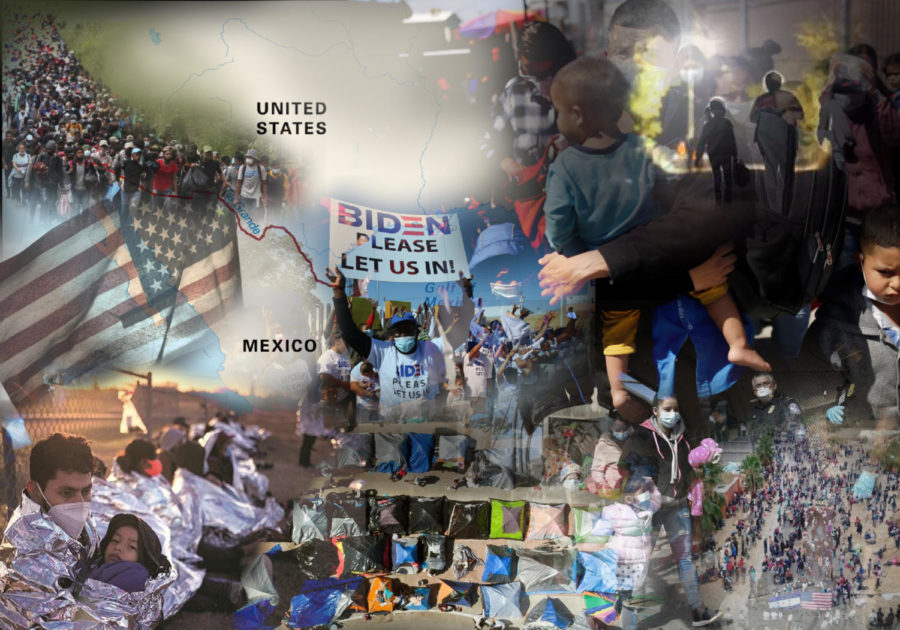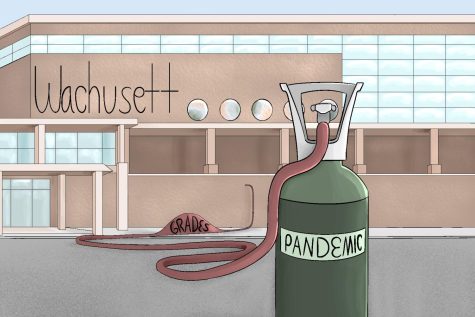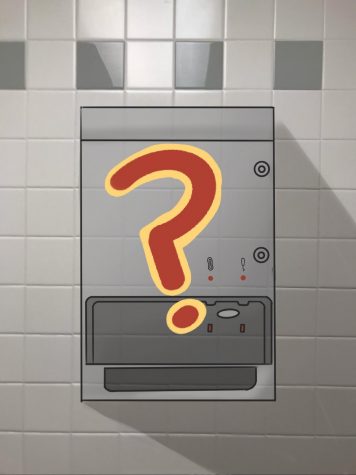Border crisis exposes flaws in immigration system
On his first day in office, Joe Biden signed multiple executive orders on immigration. These orders included a 100-day deportation moratorium, a halt on border wall construction, and the cancelation of many controversial Trump-era immigration policies.
“The task of enforcing the immigration laws is complex and requires setting priorities to best serve the national interest,” said one of Biden’s executive orders. “My Administration will reset the policies and practices for enforcing civil immigration laws to align enforcement with these values and priorities.”
Following the promise of humane immigration policies under the Biden-Harris administration, thousands of Latin Americans flocked to the southern border in February hoping to be granted admission into the United States. Children made up the majority of these migrants.
BBC news reported that as of early May more than 22,500 unaccompanied minors came under the custody of US Customs and Border Protection (CBP). But, as more children began arriving unaccompanied at the border, a humane ideal quickly transformed into a crisis.
As children flooded the border, shelters run by the CBP quickly became overwhelmed. Facilities intended for adults rapidly filled with children and grew to become days away from reaching maximum capacity.
The Biden-Harris administration, amidst this unprecedented surge at the border, refused to call the situation a “crisis”. Instead, the administration referred to this as a “challenge”.
Children, under usual circumstances, initially stay at CBP facilities upon arrival and then transfer to the Office of Refugee Resettlement (ORR) where they stay in facilities specifically designed for children. Legally, this transfer is meant to occur within 72 hours. Around 5,000 children have exceeded that stay.
The border crisis continued through April and the government came under harsh criticism as children stayed in jail-like facilities where disease and overcrowding were common. The heartbreaking pictures of rows of children sleeping on the ground and covered with foil blankets increased cries for government action.
“I think it is clear that the government has to do a better job of taking care of people that are in American custody,” said social studies teacher Joe Jourdain. “Seeing someone sleep on a concrete floor with a foil blanket is not an image in keeping with America’s welcoming of immigrants.”
At the end of April, the government stepped in and set up 12 additional shelters to house and care for these children. In exchange for AstraZeneca coronavirus vaccines from the United States, Mexico pledged to assist the US in dealing with the border crisis by taking back Central American families expelled from the US and closing its southern border to nonessential travel.
CNN news reported that, as a result of these policies, the number of unaccompanied minors staying in jail-like facilities decreased by nearly 84%.
Though implementing policies directed at helping migrant children is clearly the right action to take, the Biden-Harris administration owes an apology to all children they placed in cage-like facilities. Treating children in such a manner should be unacceptable in the United States.
“I think we need to have a real conversation about immigration,” said English teacher Cathy Nicastro. “We change [immigration policies] with every administration instead of having a real, honest conversation about them. As a country, we really need to have a conversation about this.”
Although the Biden-Harris administration has undeniably made strides in its response to the border crisis, particularly when dealing with the arrival of unaccompanied minors, the administration’s entire policy cannot become centered around response to the crisis.
Rather, the government should seek to identify the root causes forcing migration and seek to address these issues instead of just dealing with the consequences of them.

Saaya is a junior from Holden and this is her second year being a part of The Echo. She loves playing soccer, spending time with friends, and of...

Lizzie is a senior at Wachusett and this is her second year being a part of the Echo. In addition to working on the Echo, she enjoys doing graphic design,...













